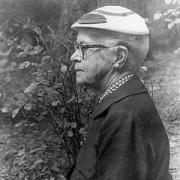 W
WNellie Beatrice Osborn Allen (1874–1961) was an American landscape architect. She is known for her knot gardens.
 W
WCleo Baldon was an American architect, landscape architect, and furniture designer based in Los Angeles, where she contributed to many well-known structures, especially pools. She worked as the design director of Galper-Baldon Associates, headquartered in Venice, California. Baldon is credited with having a profound effect on the California furniture industry with her outdoor furniture designs.
 W
WCheryl Barton is an American landscape architect and founding principal of the San Francisco-based Office of Cheryl Barton. A Fellow and Past President of the American Society of Landscape Architects, she has completed a wide range of national and international projects in the US, Europe, Singapore, Abu Dhabi, and Bolivia. Her work includes national and local public parks, urban open spaces and master plans, cultural landscapes, college and institutional campuses, public art installations, corporate landscapes, and ecological master plans. Barton has received an Individual Fellowship from the National Endowment for the Arts and the Rome Prize in Landscape Architecture from the American Academy in Rome. She was featured in the 2012 documentary, Women in the Dirt.
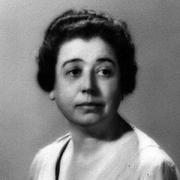 W
WKatherine Emilie Bashford (1885–1953) was an American landscape architect who designed residential gardens primarily in Pasadena and landscaping for several Southern California public housing projects.
 W
WEster Laura Matilda Claesson was a Swedish landscaping pioneer and is considered the first female landscape architect in Sweden.
 W
WMarian Cruger Coffin was an American landscape architect who became famous for designing numerous gardens for members of the East Coast elite. As a child, she received almost no formal education but was home-tutored while living with her maternal relatives in upstate New York. Coffin was determined to embark on a career despite the social problems that it would cause for a woman of her class and enrolled at the Massachusetts Institute of Technology, where she studied between 1901–4 as one of only four women in architecture and landscape design.
 W
WKate Cullity is an Australian landscape architect and founding director of TCL, a landscape architecture and urban design practice based in Melbourne and Adelaide, Australia.
 W
WLorrie Alfreda Dunington-Grubb was an English landscape architect. She moved to Canada in 1911 with her husband and business partner Howard Dunington-Grubb where they founded Sheridan Nurseries. She was active in garden design, a writer and a patron of the arts.
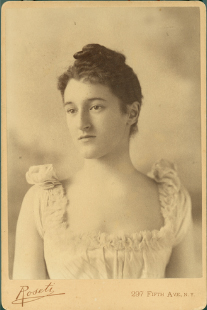 W
WBeatrix Cadwalader Farrand was an American landscape gardener and landscape architect. Her career included commissions to design about 110 gardens for private residences, estates and country homes, public parks, botanic gardens, college campuses, and the White House. Only a few of her major works survive: Dumbarton Oaks in Washington, D.C., the Abby Aldrich Rockefeller Garden on Mount Desert, Maine, the restored Farm House Garden in Bar Harbor, the Peggy Rockefeller Rose Garden at the New York Botanical Garden, and elements of the campuses of Princeton, Yale, and Occidental.
 W
WTeresa Gali-Izard is a Spanish landscape architect, agronomist and professor of landscape architecture.
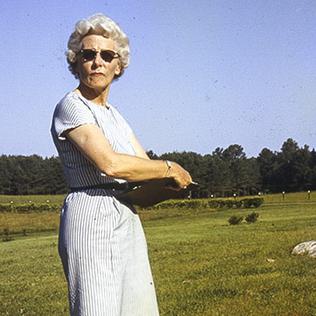 W
WEdith Harrison Henderson (1911–2005) was an American landscape architect who practiced largely in the American South. She wrote a column for the Atlanta Journal Constitution and was the first woman to be elected an officer of the American Society of Landscape Architects.
 W
WTheodora Kimball Hubbard (1887-1935) was the first librarian of the Harvard School of Landscape Architecture, and a contemporary of and collaborator with many significant figures in landscape architecture in expanding the body of knowledge in that subject area.
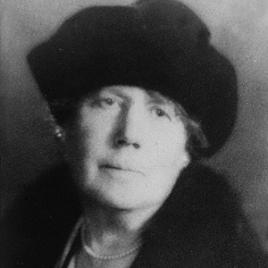 W
WMartha Brookes Hutcheson was an American landscape architect, lecturer, and author, active in New England, New York, and New Jersey.
 W
WAlice Recknagel Ireys was an American landscape architect whose notable clients included the Brooklyn Botanic Garden, the New York Botanical Garden, the Clark Botanic Garden, the Abigail Adams Smith Museum, and the Brooklyn Museum.
 W
WMary Rutherfurd Jay (1872–1953) was one of America's earliest landscape architects and an advocate of horticultural education and careers for women. The great, great granddaughter of American Founding Father John Jay, she grew up in Rye, New York surrounded by the gardens of her ancestral homestead at the Jay Estate in Westchester County overlooking Long Island Sound. Her education was fostered by travel abroad with her mother and domestically through classes in design and horticulture taken at the Massachusetts Institute of Technology (MIT) and the Bussey Institute in Forest Hills, Massachusetts.
 W
WJennifer Keesmaat is a Canadian urban planner who served as Chief City Planner of Toronto from 2012 to 2017. On August 28, 2017, she announced that she would resign from her position as Chief Planner, effective September 29 of the same year, and subsequently accepted a teaching position at the University of Toronto. In March 2018, Keesmaat became the CEO of the Creative Housing Society, an independent non-profit group dedicated to creation of affordable housing projects. She was named the ninth most influential person in Toronto by Toronto Life in 2014, and the 41st most important person in Canada by Maclean's in 2013.
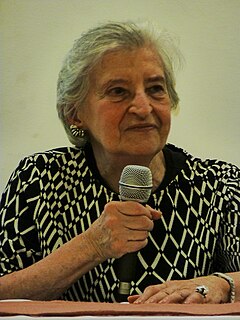 W
WRosa Grena Kliass is a Brazilian landscape architect. She is considered to be one of the most significant practicing designers in the history of modern and contemporary landscape architecture in Brazil. Her projects include the renovation of the Anhangabaú Valley, the Parque da Juventude, and the landscape master plan for the city of São Paulo do Maranhão. Kliass also founded and led the Brazilian Association of Landscape Architects in 1976.
 W
WClermont Huger Lee (1914–2006) was a landscape architect from Savannah, Georgia most known for her work designing gardens and parks for historical landmarks in the state. Specifically, Lee is known for her designs such as the Juliette Gordon Low Birthplace, Isaiah Davenport House and Owens-Thomas House. Lee assisted in founding of the Georgia State Board of Landscape Architects which serves as a licensing board for landscape architects throughout Georgia. She is considered one of the first women to establish their own private architecture practice in Georgia and was inducted into the Georgia Women of Achievement in 2017 and Savannah College of Art and Design's Savannah Women of Vision on February 14, 2020. SCAD honors Lee with a gold relief in its Arnold hall.
 W
WDiane Jean Lucas is a New Zealand landscape architect and environmental planner known for her conservation works, and particularly in and around Christchurch, Banks Peninsula and the Canterbury Plains and South Island High Country. She is a strong advocate for the protection of natural and indigenous ecosystems, and sustainable rural management.
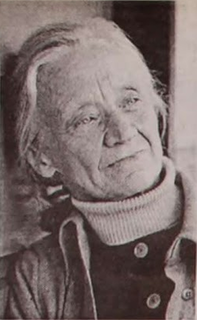 W
WElizabeth (Bauer) Mock was director of the Department of Architecture and Design at the Museum of Modern Art (MoMA) and a university professor. She was a charter apprentice at Frank Lloyd Wright's Taliesin, and the first former Taliesin fellow to join the MoMA staff. She was an influential advocate for modern architecture in the United States.
 W
WKate Orff, RLA, FASLA, is the founding principal of SCAPE, a design-driven landscape architecture and urban design studio based in New York. She also is the director the Urban Design Program (MSAUD) at Columbia University's Graduate School of Architecture, Planning and Preservation and co-director of the Center for Resilient Cities and Landscapes. Orff is the first landscape architect to receive a MacArthur Fellowship.
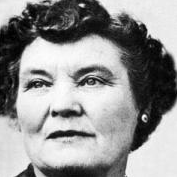 W
WElizabeth Greenleaf Pattee (1893–1991) was an American architect, landscape architect, and architecture professor in the Northeast whose career spanned a half century.
 W
WJanet Meakin Poor was a landscape design specialist based out of Winnetka, Illinois. She was the great great niece of the famous American impressionist painter Lewis Henry Meakin.
 W
WElsa Rehmann was an American landscape architect best known for her pioneering ecological approach to garden design. She and Edith A. Roberts promoted seeking inspiration in plant communities, which Rehmann considered to be the basis for design criteria and translated them into artistic composition.
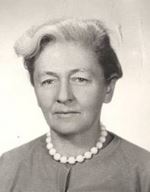 W
WAlina Scholtz was a Polish landscape architect, known as one of country's pioneers in developing the field. Throughout her career she worked on various public and private projects for cemeteries, parks and green spaces. Some of her most noted works include the grounds of a villa on Kielecka Street in Warsaw for which she won a Silver Medal at the 1937 World Exhibition in Paris, the memorial cemetery to the victims of the Palmiry massacre, and landscaping projects along the East-West traffic route of Warsaw. In addition to her design work, she served as one of the founding members of the International Federation of Landscape Architects.
 W
WKatherine Olivia "Kate" Sessions was an American botanist, horticulturalist, and landscape architect closely associated with San Diego, California, and known as the "Mother of Balboa Park."
 W
WBonnie Ora Sherk is an American landscape architect, planner, educator, international artist, and founder of The Farm and A Living Library. Sherk is a professional artist who exhibits her work in museums and galleries around the world. Her work has also been published in art books, journals, and magazines. Her work is considered a pioneering contribution to Eco Art.
 W
WEllen Biddle Shipman was an American landscape architect known for her formal gardens and lush planting style. Along with Beatrix Farrand and Marian Cruger Coffin, she dictated the style of the time and strongly influenced landscape design as a member of the first generation to break into the largely male occupation.
 W
WBarbara "Bobbie" Stauffacher Solomon is an American landscape architect and graphic designer. She is well known for the large scale interior Supergraphics and exterior signage at Sea Ranch in Sonoma County, California.
 W
WMina Klabin Warchavchik was a Brazilian landscape architect known for designing modern and abstract gardens composed of plants native to Southern Brazil. She created gardens surrounding homes designed by her husband, Brazilian modernist architect Gregori Warchavchik.